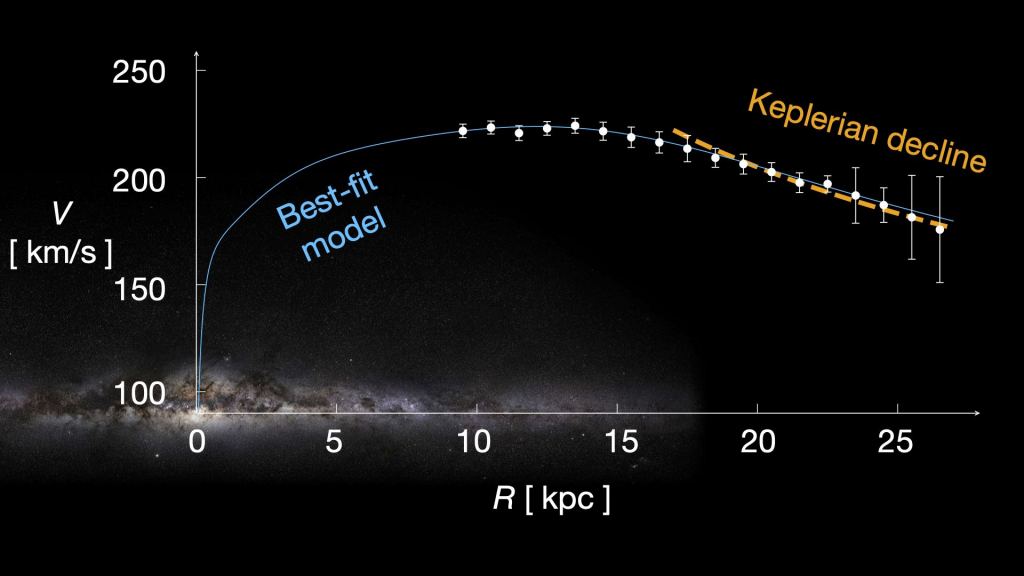How massive is the Milky Way? It’s an easy question to ask, but a difficult one to answer. Imagine a single cell in your body trying to determine your total mass, and you get an idea of how difficult it can be. Despite the challenges, a new study has calculated an accurate mass of our galaxy, and it’s smaller than we thought.
One way to determine a galaxy’s mass is by looking at what’s known as its rotation curve. Measure the speed of stars in a galaxy versus their distance from the galactic center. The speed at which a star orbits is proportional to the amount of mass within its orbit, so from a galaxy’s rotation curve you can map the function of mass per radius and get a good idea of its total mass.
We’ve measured the rotation curves for several nearby galaxies such as Andromeda, so we know the masses of many galaxies quite accurately. But since we are in the Milky Way itself, we don’t have a great view of stars throughout the galaxy. Toward the center of the galaxy, there is so much gas and dust we can’t even see stars on the far side.
So instead we measure the rotation curve using neutral hydrogen, which emits faint light with a wavelength of about 21 centimeters. This isn’t as accurate as stellar measurements, but it has given us a rough idea of our galaxy’s mass. We’ve also looked at the motions of the globular clusters that orbit in the halo of the Milky Way.
From these observations, our best estimate of the mass of the Milky Way is about a trillion solar masses, give or take. The distribution of stars seen by the Gaia surveys. Credit: Data: ESA/Gaia/DPAC, A.
Khalatyan(AIP) & StarHorse team; Galaxy map: NASA/JPL-Caltech/R. Hurt This new study is based on the third data release of the Gaia spacecraft. It contains the positions of more than 1.
8 billion stars and the motions of more than 1. 5 billion stars. While this is only a fraction of the estimated 100-400 billion stars in our galaxy, it is a large enough number to calculate an accurate rotation curve.
Which is exactly what the team did. Their resulting rotation curve is so precise, that the team could identify what’s known as the Keplerian decline. This is the outer region of the Milky Way where stellar speeds start to drop off roughly in accordance with Kepler’s laws since almost all of the galaxy’s mass is closer to the galactic center.
The Keplerian decline allows the team to place a clear upper limit on the mass of the Milky Way. What they found was surprising. The best fit to their data placed the mass at about 200 billion solar masses, which is a fifth of previous estimates.
The absolute upper mass limit for the Milky Way is 540 billion, meaning that the Milky Way is at least half as massive as we thought. Given the amount of known regular matter in the galaxy, this means the Milky Way has significantly less dark matter than we thought. Reference: Jiao, Yongjun, et al.
“Detection of the Keplerian decline in the Milky Way rotation curve. ” arXiv preprint arXiv:2309. 00048 (2023).
The post The Milky Way’s Mass is Much Lower Than We Thought appeared first on Universe Today. .
From: universetoday
URL: https://www.universetoday.com/163448/the-milky-ways-mass-is-much-lower-than-we-thought/



